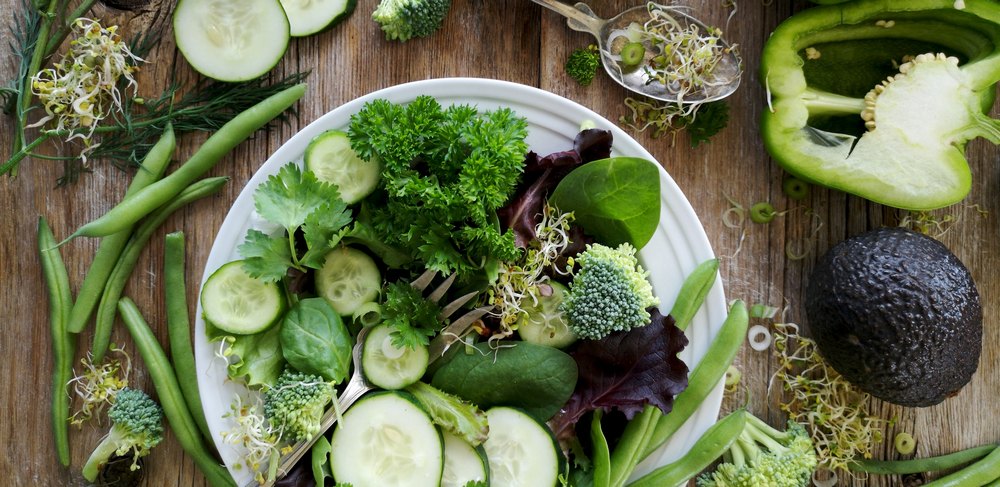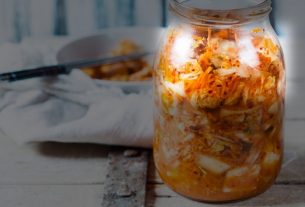You will be at a disadvantage of missing out if you do not take diets that contain various greens, ranging from spinach, collard greens, kale, and several others. It has been recommended to include eating vegetables of about two to three cups per day at the minimum, this is dependent on if you are a male or a female. It is a recommendation that has its basis on basic or normal nutrition needs. It is even more recommended that you should take more vegetables in case you are active physically.
Eating greens help you to eat the minimum constituent of vegetables daily with some of them being part of fruit salad. For several reasons, the most common recommended vegetables that you can add to your diet are greens, most especially the dark leafy types.
What if you want to freeze your greens so that they will remain fresh? The recommended way for you to freeze your greens is to first blanch them. Blanching is however not compulsory, you could proceed to freeze your greens or other types of vegetables without blanching them. It all depends on your choices. One of the things to note is that if you decide to proceed to freeze your greens without you blanching them, you will be required to pre-freeze them before you proceed to fully freeze them.
This is what we want to discuss in this post, how you can freeze your greens and how you can do that without blanching them and everything you need to know about branching and freezing your greens. This is for you to learn new ways to freeze your greens contrary to the conventional way of doing it. You could try to get a double-sealed freezer bag of high quality beforehand. We hope you will have a nice time as you read.
A Guide to Greens and How to Freeze Them
When we talk of greens, you could have familiarity with the leafy greens and collard greens, we have quite a few vegetables that we can qualify to be greens and it’s much more than the normal leafy or collard greens that you know.
What are those things included when we talk about greens? Check the long list below:
- Bok choy
- Turnip greens
- Endive
- Arugula
- Swiss chard
- Romaine lettuce
- Watercress
- Beet greens
- Cabbage
- Spinach
- Collard greens
- Microgreens
- Kale
You could be very familiar with some of the items on the list as being leafy types of vegetables that we mostly use for salads. In case those are the only use you can link with them, they are much more useful than the listed above as they are as well used for several other meals. Most of these vegetables are those you can cook and serve as a portion of warm meals, though some do not require full cooking while others are best serves fresh or cold.
What Makes Greens so Great?
If greens are a type of vegetable, then why are they great?
The first thing to note about greens is that they have dense nutritional constituents, they are super rich in nutrients and this makes them more nutritional when compared to other types of vegetables. Most greens are sources of Vitamins B, A, C, and D and other nutrients like folate and calcium. These nutrients are contained in approximately all the greens listed above. However, some other greens have special minerals such as potassium, manganese, and others. Some of these greens could be better sources of nutrients and minerals than conventional multi-vitamins.
Greens also have relatively low calories despite being so rich in nutrients and vitamins. This means that you are not limited by how much you can take and you could enjoy them by adding to dishes and also incorporate them as a portion of your diets.
Let’s check out some of the health benefits associated with taking greens as part of your diet;
- Reduces the risks of cancer
- Properties such as anti-inflammatory
- Reduces mental illnesses
- Focus and mental clarity
- Cardiovascular disorders and heart disease protection
- Obesity risk reduction and weight loss
- Level rate of blood pressure
These highlighted health benefits are just some of the benefits that you can get from consuming various greens. Several other health benefits come with taking greens daily.
The Process of Freezing Greens
Conventionally, greens are often blanched before they are frozen, but it is possible you could decide not to blanch them before freezing. We want to focus on how you can freeze your greens without blanching, but we will also discuss how you can freeze after blanching them.
Freezing your greens is not dependent on whether you bought it from a local store or if possible that you harvested them from your garden. The steps to freeze for either situation are the same.
What is Blanching, What Does It Do?
Let’s discuss what blanching is. Blanching helps to preserve your vegetables and it is different from cooking. The method of blanching to preserve your vegetables does not make your vegetables get cooked, it involves placing your vegetables inside boiling water for approximately three minutes. Do not blanch your vegetables longer than the three minutes or you risk them getting cooked. Remove them after the stipulated time, rinse them immediately inside cold water and allow to drain. After they are drained, dry by patting them.
Blanching helps you retain the vegetable’s nutrients until when you need it. Blanching will help you keep your vegetables safe until you are ready to cook them, make salads from them, and even freeze them. The colors of your vegetables are also kept strong and bright as well as maintain their enzymes and natural nutrients. With blanching, you are not scared of your vegetables getting spoilt.
Certain risks could come if you do not blanch your greens before you freeze them, check them below:
- They could get spoilt when you thaw them
- The texture could change
- Natural flavor and enzymes reduction
- Wilted leaves
- Fading colors.
Now let’s go to the main point, you could go ahead freezing greens without first blanching them.

Freezing Greens without Blanching
This post has covered exactly how you can blanch your greens before freezing and the risks involved if you decide not to. You could however get the same result if you decide to freeze them directly without blanching. Follow the steps below:
- You need to first pre-freeze your greens which will act in preserving them and further stop any possible risk of losing the crisps or wilting. It keeps the texture and flavor fresh.
- Spread the greens on a baking sheet of high quality that has parchment paper and leave inside your freezer for two to three hours.
- After pre-freezing, pack your greens into a freezer bag or airtight container. A Freezer bag is highly recommended because it is more spacious.
- Then you can freeze the greens for up to nine months.
The method to pre-freeze has the same preservation effect on the greens as blanching. So, in case you will not like to blanch your greens, it is recommended that you pre-freeze them if you want to get the desired result.
Using Greens after Freezing
It is quite easy to use greens after you have frozen them, it is either you remove them from your freezer and leave them at room temperature to thaw for one to two hours or remove them from the freezer and put overnight inside the fridge. Open up the freezing bag and spread out your green to effectively thaw them and this will help reduce excess moisture build-up when thawing. You could also pat them to dry up before using them as you wish.
Related Questions about Leafy Vegetables
After this post, with the detailed explanation of how to blanch your greens before freezing them and how to freeze your greens without blanching, you can fully choose how you want to freeze your greens. Check below for some questions and answers that will help you further:
Are All Greens Leafy Vegetables?
Most of the greens are leafy and it is yet to be researched that any of the greens we have around are not leafy. The first thing that comes to mind when we hear the word greens is that they are leafy vegetables. A primary type of green is collard greens. You should check out our list highlight in this article for other types of common greens and the nutritional constituents of greens.
Can You Eat Too Many Leafy Greens?
It is quite possible to consume too many leafy greens despite having so many nutritional values. You are at risk of having some health issues such as irritable bowels, reduced blood pressure, abdominal pains, kidney, or kidney stones. This does not, however, imply that you should not eat your greens. You can only be at risk of the symptoms above only if you take excess and researches have shown that you will have to take upward of seven pounds in a day to be at risk.


